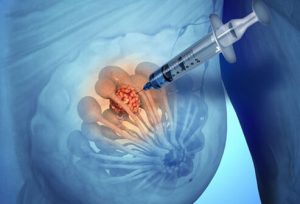Neoplasm refers to the abnormal growth of the cells as the result of mutation. These abnormal cells proliferate and do not die like the normal cells and form of a lump or tumor. The neoplasm of the breast can be either cancerous (malignant) or noncancerous (benign). A benign tumor generally does not grow aggressively or invade other parts of the body. The malignant tumor has the ability to grow aggressively, invade the surrounding tissues or spread to other parts of the body.
Benign breast conditions
The benign breast conditions are noncancerous and not life threatening. The benign conditions of the breast and cancer both exhibit several symptoms which are similar; hence when women experience anything unusual in their breasts, they are advised to consult the physician who will conduct various imaging tests and physical examination to determine the cause of the changes.
- Intraductal papillomas
This is the growth of benign tumors in the breast ducts. They can grow as single or multiple tumors in the milk ducts causing bloody or clear nipple discharge.
- Hyperplasia (ductal or lobular)
This is the condition where the cells of the ducts or the milk glands are growing fast and look abnormal. This may not cause any lumps but the abnormal changes can be observed in the mammogram.
- Fibrosis and simple cyst
Most of the breast lumps are the result of fibrosis or cysts. The fibrosis may feel hard, rubbery or firm when touched. The cysts are usually fluid-filled, round or oval, movable lumps present within the breasts.
- Fibroadenomas
This is the common type of benign breast condition affecting women. Fibroadenomas often feel like the marbles that can be moved within the breasts. Some of these can be very small and may only be evident when observed under the microscope.
- Lobular carcinomas in situ
These are cancer like cells that develop in the milk-producing glands (lobules). Although they may not become as invasive cancer, it has the potential.
Breast cancer
The breast cancer commonly occurs in the ducts and the glands that produce the milk (lobular). The symptoms of breast cancer can include swelling of the breast, skin irritation, nipple discharge, redness of the nipple, pain and nipple turned inward. The prognosis is usually based on the size and how far cancer has spread. The treatment usually involves the surgery or radiation therapy usually used in early forms of cancer. The systemic treatments use drugs that can target the cancer cells anywhere in the body with chemotherapy, hormone therapy and targeted therapy.
Some of the types of breast cancer include;
- Ductal carcinoma in situ which begins in the milk ducts and has the possibility of becoming invasive cancer later.
- Invasive ductal carcinoma accounts for 80% of all the breast cancer. This type refers to cancer that has spread beyond the wall of the milk duct.
- Invasive lobular carcinoma is the second common type of breast cancer. This refers to cancer that has spread beyond the wall of the milk-producing lobules.
- Inflammatory breast cancer is a rare type that starts with the reddening and swelling of the breast. This can progress rapidly becoming worse within months or weeks. Most of these types are invasive meaning they can spread beyond the milk ducts of the breast.
- Paget disease of the nipple initially starts in the ducts of the nipples, spreading to the nipple surface and the dark surface around the nipple (areola).



